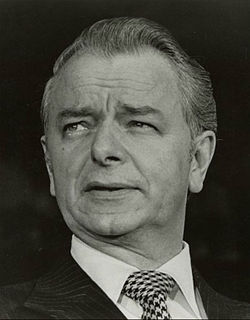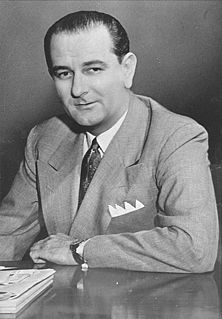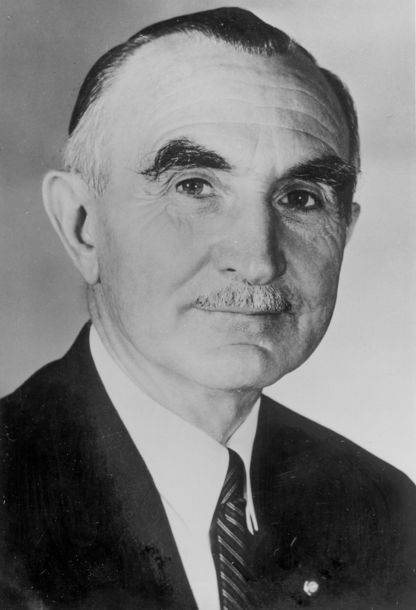
The 1986 United States Senate elections was an election for the United States Senate in the middle of Ronald Reagan's second presidential term. The Republicans had to defend an unusually large number of freshman Senate incumbents who had been elected on President Ronald Reagan's coattails in 1980. Democrats won a net of eight seats, defeating seven freshman incumbents and regaining control of the Senate for the first time since January 1981. The party not controlling the presidency gained seats, as usually occurs in mid-term elections.

The 1978 United States Senate elections in the middle of Democratic President Jimmy Carter's term. Thirteen seats changed hands between parties. The Democrats at first lost a net of two seats to the Republicans, and then one more in a special election. Democrats nevertheless retained a 58-41 majority.

The 1964 United States Senate elections coincided with the election of President Lyndon B. Johnson by an overwhelming majority, to a full term. His Democratic Party picked up a net two seats from the Republicans. As of 2019, this is the last time either party has had a two-thirds majority in the Senate, which would have hypothetically allowed the Senate Democrats to override a veto, convict and expel certain officials, or invoke cloture without any votes from Republicans. The Senate election coincided with Democratic gains in the House in the same year.

The 1962 United States Senate elections was an election for the United States Senate which was held in the middle of President John F. Kennedy's term. His Democratic Party made a net gain of three seats from the Republicans, increasing their control of the Senate.

The 1960 United States Senate elections coincided with the election of John F. Kennedy as president. The Republicans gained one seat at the expense of the Democrats. The Democrats nonetheless retained a commanding lead in the Senate with 64 seats to 36. As Majority Leader Lyndon B. Johnson was elected Vice President, Mike Mansfield became the new Majority Leader.

The 1958 United States Senate elections were elections for the United States Senate which occurred in the middle of President Dwight D. Eisenhower's second term. As is common in midterm elections, the party in the White House lost seats, but losses this year were more than usual, perhaps due to the high unemployment of the Recession of 1958. The Eisenhower Administration's position on right-to-work issues galvanized labor unions which supported Democrats. The launch of Sputnik may also have been a factor.

The 1956 United States Senate elections were elections for the United States Senate that coincided with the re-election of President Dwight D. Eisenhower. Although the Democrats gained two seats in regular elections, the Republicans gained back two seats in special elections, leaving the party balance of the chamber remained unchanged.

The 1954 United States Senate elections was a midterm election in the first term of Dwight D. Eisenhower's presidency. Eisenhower's Republican party lost a net of two seats to the Democratic opposition. This small change was just enough to give Democrats control of the chamber with the support of an Independent who caucused with them.

The 1950 United States Senate elections occurred in the middle of Harry S. Truman's second term as President. As with most 20th-century second-term mid-terms, the party out of the Presidency made significant gains. The Republican opposition made a net gain of five seats, taking advantage of the Democratic administration's declining popularity during the Cold War and the aftermath of the Recession of 1949. The Democrats held a narrow 49 to 47 seat majority after the election. This became the first time since 1932 that the Senate Majority Leader lost his seat and the only instance where the majority leader lost his seat while his party retained the majority.

The 1946 United States Senate elections were held November 5, 1946, in the middle of Democratic President Harry S. Truman's first term.

The United States Senate elections of 1944 coincided with the re-election of Franklin D. Roosevelt to his fourth term as President. The Democrats' large majority remained the same, but they lost one seat to the Republicans in a special election.

The United States Senate elections of 1942 were held November 3, 1942, midway through Franklin D. Roosevelt's third term as President.

The United States Senate elections of 1940 coincided with the election of Franklin D. Roosevelt to his third term as President.

The United States Senate elections of 1938 occurred in the middle of Franklin D. Roosevelt's second term. This occurred six years after the Democratic landslide in the 1932 election, and so the opposition Republicans gained seven seats from the Democrats. However, the Democrats retained a commanding lead over the Republicans with more than two-thirds of the chamber.

William Arthur Purtell was an American businessman and politician. A member of the Republican Party, he represented Connecticut in the United States Senate in 1952 and from 1953 to 1959.

The United States Senate elections of 1928 were elections that coincided with the presidential election of Republican Herbert Hoover. The strong economy helped the Republicans to gain seven seats from the Democrats.

The 1952 United States House of Representatives elections was an election for the United States House of Representatives in 1952 which coincided with the election of President Dwight Eisenhower. Eisenhower's Republican Party gained 22 seats from the Democratic Party, gaining a majority of the House. However, the Democrats technically had almost 250,000 more votes (0.4%). This would be the last time the Republican Party won a majority in the House until 1994. It was also the last election when both major parties increased their share of the popular vote simultaneously, largely due to the disintegration of the American Labor Party and other third parties. Finally, it would be the last time either party gained new control of the House of Representatives, coinciding with a presidential election.

Although the 17th Amendment was not passed until 1913, some states elected their Senators directly before its passage. Oregon pioneered direct election and experimented with different measures over several years until it succeeded in 1907. Soon after, Nebraska followed suit and laid the foundation for other states to adopt measures reflecting the people's will. By 1912, as many as 29 states elected senators either as nominees of their party's primary or in conjunction with a general election.

The 1952 United States Senate election in New York was held on November 4, 1952, as part of the bi-annual regular state election, to elect a U.S. Senator. At the same time, all members of the next New York State Assembly and the next New York State Senate, as well as presidential electors were elected.

The 1952 United States elections was held on November 4. The Republicans took control of the presidency and both chambers of Congress for the first time since the Great Depression. The election took place during the Korean War.


















